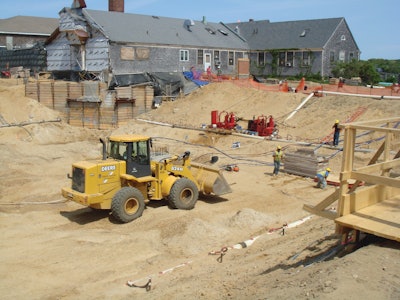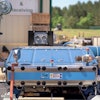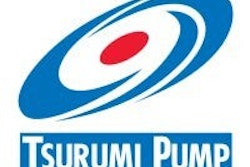
Pumps are a common item in many rental inventories. In a lot of cases, renting them to customers is a simple matter of determining the right type of pump and the correct size. In other situations, however, it takes a deeper understanding of the science of pumping to make the right recommendation.
"Much can be garnered by simply asking what the pump is being used for,” notes Mike Grant with Tsurumi America. "The main intent is to find out if your customer will be pumping clean or dirty water. Once this is determined, you can recommend a pump for the application."
He continues, "Based on our sales to the rental market, the most commonly rented portable pumps are 2-inch electric (up to 82 gpm), 2-inch engine-driven centrifugal (137 gpm) and 3-inch engine-driven trash (360 gpm). The size of the job will also help determine which pump to recommend on the rental."
Getting a big picture view of the pumping application helps determine the follow-up questions and, ultimately, the design of the portable pumping system. Is it a small dewatering job at a construction site for a few hours or days, or is it a large sewer bypass requiring continuous pumping for weeks? The level of complexity dictates the course of action.
Thomas Aldridge, Jr. at Griffin Dewatering says to start by asking customers the basics: what is the application, how much water is being moved, where is it being moved to, where is it being moved from. "Based on some of these pieces of information, a rental employee can guide the customer to the range of pumps that may suit their needs. The application narrows the pump family while the volume and pumping locations identify the performance range."
According to Pete Snow at Xylem, the rental employee also needs to know the elevation from the water's location to where it will be discharged, and how far away the discharge point is (this determines how much head needs to be overcome).
It always helps to get as much information as possible, says Kirsten Petersen Stroud at Thompson Pump. "Equipment rental centers need detailed, accurate information about flow, lift and pressure required by the application. Without detailed information and a knowledgeable staff, a customer could end up with a pump that either cannot do the job or cannot do it efficiently."
Small dewatering jobs can be handled by gasoline-powered wet-priming pumps with suction and discharge sizes of 2 to 3 inches in diameter. These pumps can run for several hours on a tank of gas and will move up to 250 gallons per minute. The system design usually includes 20 to 30 feet of suction hose and 100 to 200 feet of layflat discharge hose. General rental businesses can meet these application requirements, Stroud says. On the other hand, large dewatering or sewer bypass jobs are far more complex and can involve 24-hour pumping operation and flows up to 4,000 gallons per minute and more.
Pumping fundamentals
While large dewatering projects are typically handled by companies specializing in pump rentals, it doesn't hurt for your staff needs to understand a little bit about hydraulic science in order to make the best recommendations. "Basically, the key factors for a pumping job are flow rate, head, suction lift, and solids-handling," Aldridge says. "If any one of these is not properly identified as a requirement and used to select the pump, the equipment won’t meet the expectations. One of the most misunderstood factors is that the connection size determines how the pump will perform. In reality, not all 6-inch pumps are 6-inch pumps. But by using the key factors mentioned and reviewing the pump performance curve, the renter can select the best equipment."
He continues, "The hardest part of pump selection is to determine the friction or resistance to the flow that can be caused by the piping or hose used. There are simplified charts that help to determine this. The critical thing is to be able to visualize the system and know the materials that are being used in the system."
Snow at Xylem agrees, noting two primary factors in every application are gravity and friction. "Gravity depends on the vertical lift needed, and friction on the distance the water must travel and the pipe diameter," he says. "More than specific formulas or calculations, one should consider the restraints of the job. The velocity in a pipe, and its friction resistance, will determine the amount of flow that can be reasonably achieved."
A good guideline for centrifugal pumps is a maximum velocity of 12 feet per second. From here, practical flows in a given diameter of hose can be estimated:
| Pipe Diameter | Typical Maximum Flow |
| 4" | 500 gpm |
| 6" | 1,000 gpm |
| 8" | 2,000 gpm |
| 12" | 4,000 gpm |
"A pump must create enough discharge head to overcome elevation at a jobsite," Snow explains. "How well the pump performs is determined by the physical conditions of each application. Therefore, no two applications will be the same. A pump that worked great on one site might not be ideal for another."
Following are short explanations of some of the scientific concepts involved in any pumping job:
Flow - The amount of liquid (usually measured in gpm or gallons per minute) dictates the size of the pump and hose. Flow is the horizontal axis on a pump performance chart.
Static head - This refers to the vertical elevation difference from the water surface to the pump suction and from the pump discharge to the end of the hose or pipe. The more head, or elevation difference, the stronger the pump required to overcome gravity resistance when moving water.
Distance - This is the space between the pump and the discharge point. This contributes to the amount of friction resistance encountered when water travels through the hose or pipe.
Static head, or gravity resistance, and distance, or friction resistance, are combined to determine the total amount of resistance the pump will see during the application. This is referred to as total dynamic head and is the vertical axis on a pump performance curve.
Each pump is rated capable of achieving a certain amount of flow and overcoming a certain amount of resistance. Ideally, the pump system will be designed so that the pump operates in the middle area of flow and head, known as the 'sweet spot' of the curve.
Bottom line
Renting pumps is more than handing over a piece of machinery when the customer needs it. In a lot of cases, the customer's job is complicated and involves people's lives or livelihoods. In cases like this, your business is supplying a solution to a problem as well as the machine to move water. Having a knowledge and understanding of basic hydraulics and pump technology is helpful in making that happen.
"Regardless of the type of customer, they all have one thing in common – they want a successful pumping application to move product from Point A to Point B," Snow says. "A successful pump person will get the critical information (flow, elevation and distance), and recommend the right size pump for the job. Since a customer's knowledge of pumps can be limited, they value technical support. Learning about pumps and their applications is time well spent for rental employees."




















